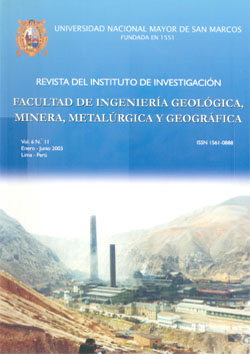Materials: corrosion, its tradition and scope
DOI:
https://doi.org/10.15381/iigeo.v6i11.751Keywords:
Corrosión, pérdidas, materialesAbstract
Corrosion in its two aspects, of teaching and research, has a long tradition in the different technological and scientific institutions. In Peru, it is estimated that the losses due to corrosion exceed 8% of the Gross National Product, which meant that by the year 2000 they reached close to 1,200 million dollars, of which to the chemical and petroleum industries sector corresponds to 120 million dollars. This cost is less surprising if we consider that corrosion occurs with a range of degrees of severity wherever metals and other materials are used. However, if the existing knowledge were properly applied to this problem, it would be possible to reduce losses without the need for new advances or the development of new materials by approximately 25 to 30%. Furthermore, we want businessmen, professionals, students and the general public to know that we have a common enemy called corrosion, against which we must fight so that processes are cleaner, more efficient, with greater profitability and thus we can all have a healthy life in an increasingly clean environment. The purpose of this article is to present in a general way the problem of corrosion and its possible solutions, even though it is not intended to indicate the best possible solution to specific cases.
Downloads
Published
Issue
Section
License
Copyright (c) 2003 Samuel Rosario Francia, Juan Carlos Yácono Llanos

This work is licensed under a Creative Commons Attribution-NonCommercial-ShareAlike 4.0 International License.
AUTHORS RETAIN THEIR RIGHTS:
a. Authors retain their trade mark rights and patent, and also on any process or procedure described in the article.
b. Authors retain their right to share, copy, distribute, perform and publicly communicate their article (eg, to place their article in an institutional repository or publish it in a book), with an acknowledgment of its initial publication in the Rev. Inst. investig. Fac. minas metal cienc. geogr.
c. Authors retain theirs right to make a subsequent publication of their work, to use the article or any part thereof (eg a compilation of his papers, lecture notes, thesis, or a book), always indicating the source of publication (the originator of the work, journal, volume, number and date).






